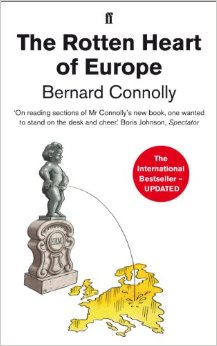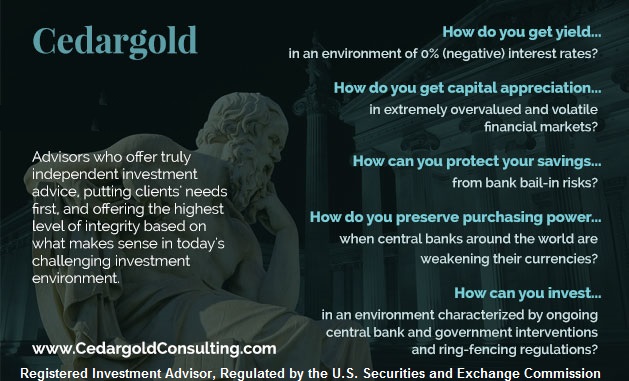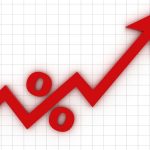
Blog
 02/22/2017 - Will A Trump Administration Cause Rising Inflation And Rising Interest Rates?
02/22/2017 - Will A Trump Administration Cause Rising Inflation And Rising Interest Rates?

 02/19/2017 - The Roundtable Insight: Doug Casey On The Economic State Of The World
02/19/2017 - The Roundtable Insight: Doug Casey On The Economic State Of The World

FRA is joined by best-selling author and world-renowned speculator Doug Casey in discussing current economic state of the world, from India’s demonetization to Trump.
Doug literally wrote the book on profiting from periods of economic turmoil: his book Crisis Investing spent multiple weeks as #1 on the New York Times bestseller list and became the best-selling financial book of 1980 with 438,640 copies sold. Then Doug broke the record with his next book, Strategic Investing, by receiving the largest advance ever paid for a financial book at the time. Interestingly enough, Doug’s book The International Man was the most sold book in the history of Rhodesia. And his most recent releases Totally Incorrect (2012) and Right on the Money (2013) continue the tradition of challenging statism and advocating liberty and free markets.
He has been a featured guest on hundreds of radio and TV shows, including David Letterman, Merv Griffin, Charlie Rose, Phil Donahue, Regis Philbin, Maury Povich, NBC News, and CNN; has been the topic of numerous features in periodicals such as Time, Forbes, People, and the Washington Post; and is a regular keynote speaker at FreedomFest, the world’s largest gathering of free minds.
Doug has lived in 10 countries and visited over 175. Today you’re most likely to find him at La Estancia de Cafayate (Casey’s Gulch), an oasis tucked away in the high red mountains outside Salta, Argentina.
CURRENT WRITINGS
Speculator is the first of a series of six novels following our hero, Charles Knight, going to Africa to look at a gold mining project he got lucky on. It’s an adventure novel about a bush war in Africa and how he made a couple hundred million dollars, and it’s actually an excellent novel. The second in the series explains the drug business the same way we explain the mining business.
THOUGHTS ON THE CURRENT STATE OF THE WORLD
We entered the hurricane in 2007. The governments of the world papered it over by printing scores of trillions of new currency. It’s surprising that we haven’t gone out of the eye of the hurricane and into the trailing edge, but we’re entering the trailing edge as we speak. It’s going to be much different and much longer lasting, and much worse than the unpleasantness of 2008-2009.This is going to be the biggest deal since the Industrial Revolution 200 years ago, and not in a good way.
The Euro has always been an Esperanto currency. If the US Dollar is an “I owe you nothing” on the part of the bankrupt US government, the Euro is a “who owes you nothing”. It’s a disaster waiting to happen. The European Union itself is likely to break up, and that’s a good thing because most people are unaware of the fact that Brussels has gone from a sleepy little town to one that holds 50000 employees of the EU who serve no useful purpose. If the Europeans want a free trade zone, all they have to do is drop duties. You don’t need a gigantic bureaucracy in Brussels to do that.
We’re going into a time of real chaos. One of the big things we’re going to see is migration from Africa, especially Africa south of the Sahara. There’s a 1-1.5M migrants that came to Europe this year, but in the future there’s going to be scores of millions. Most people are unaware that 42% of the world’s population will be African by the year 2100. It’s going to be an invasion of Europe by Africans; that’s going to continue and compound. At the same time, the Chinese are taking over the continent. It’s going to be a race war. A lot of Europeans are going to be coming to South America. That’s the big picture.
It’s incredibly stupid on the part of Modi; half the people in India are earning 1-2 dollars a day. Unfortunately, this is something that’s happening to one degree or another around the world. Governments are trying to get rid of cash, and this is catastrophic from an economic point of view and a personal freedom point of view. Without cash, everything you do goes through a bank and is monitored. There is absolutely no privacy at that point, especially in India which is technologically backward. It’s a complete disaster.
It’s definitely going to happen in the US and Canada as well. All these government officials talk to each other and seem to share a common philosophy.
When you look at US government spending, we’re going to be running trillion dollar deficits as far as the eye can see. As the world goes into the next stage of the greater depression, it’s going to go well above a trillion dollars. The US government is going to be manifestly bankrupt. They can only get the money by selling the debt to the Fed, and when debt is sold to the Fed they pay for it by printing money. We’re going to be seeing much higher levels of inflation, and the Dollar is eventually going to turn into a hot potato.
TRUMP’S PROTECTIONIST POLICIES
It’s going to be worse than stagflation. If these countries stop putting up tariffs, people can’t sell to you at the same time; they don’t have the ability to buy from you. What’s going on in the US with the Trump administration is an excellent chance and the same thing will be going on in Holland and France and all through Europe.
Every four years, there’s about 2% more of the kind of people who voted for Hilary. Trump is a one term president at best, and the next president is going to be in the middle of an economic catastrophe. Americans are likely to vote for somebody that’s going to promise the government’s a cornucopia.
INVESTING IN A TRUMP WORLD
One of the good things about Trump is that he’s moving to gut the EPA. It means that mining is going to have a resurgence in the US. That’s the best place to be because the stock market is grossly overpriced by any reasonable parameter. That’s an accident waiting to happen at this point, and the bond market’s even worse. We’re at the bubble end of a 35 year bull market in bonds. Bonds are the biggest bubble in world history, at this point.
Commodities are very cheap right now. In the inflationary environment we’re going to have in the future prices are going to go way up. Food commodities are the place to be.
You should go where your money and yourself are treated best, and that’s no longer in the US.
Abstract by: Annie Zhou <a2zhou@ryerson.ca>
 02/18/2017 - The Roundtable Insight: Jayant Bhandari On India’ Demonitization And Investing Using The Principles Of The Austrian School Of Economics
02/18/2017 - The Roundtable Insight: Jayant Bhandari On India’ Demonitization And Investing Using The Principles Of The Austrian School Of Economics

FRA is joined by Jayant Bhandari in discussing emerging trends resulting from India’s demonetization, along with suggestions for investment in a Trump world.
Jayant Bhandari is constantly traveling the world looking for investment opportunities, particularly in the natural resource sector. He advises institutional investors about his finds. Earlier, he worked for six years with US Global Investors (San Antonio, Texas), a boutique natural resource investment firm, and for one year with Casey Research. Before emigrating from India, he started and ran Indian subsidiary operations of two European companies. He still travels multiple times a year to India. He is an MBA from Manchester Business School (UK) and B. Engineering from SGSITS (India). He has written on political, economic and cultural issues for the Liberty magazine, the Mises Institute (USA), Mises Institute (Canada), Casey Research, International Man, Mining Journal, Zero Hedge, Lew Rockwell, the Dollar Vigilante, Fraser Institute, Le Québécois Libre, Mauldin Economics, Northern Miner, Mining Markets etc. He is a contributing editor of the Liberty magazine. He runs a yearly seminar in Vancouver titled Capitalism & Morality.
UPDATE ON INDIA
India is becoming crazier by the day. In the last two weeks, the Indian government has come out with two new regulations which now make it illegal for people to do transactions of more than 300000 Rupees ($4500USD) in cash Remember this is a country where more than 95% of consumer transactions are cash-based. This country is becoming increasingly a police state. Everywhere people are losing jobs, food prices have fallen quite a bit, and farmers are going to face horrendous problems. In a country where more than 50% of the population lives on daily wages, if you have an economic crisis they will go hungry.
About 75-80% of Indians live in rural areas, but even in towns often there is no electricity. Only about 25% of India is connected by internet, and the connection is fairly unreliable. In rural areas there might be a bank among 50 villages. These people might need to walk 30-50km to take cash out of the bank if the government forces them to deposit. If you earn $1-2 every day, would you have time to walk for three hours each way to deposit your cash? This is an impossible situation.
EMERGING TRENDS
This has completely disrupted the economic structure of the country. Food prices have fallen quite substantially in the last few months, not because of excess supply, but because there has been a significant reduction in demand. This tells you only one thing: poor people cannot afford to buy food. Farmers can’t make money because prices have fallen so much, which means they’re dumping their produce. This means in the next cycle, these farmers will not be producing food. Food prices will be higher three months from now than they were before demonetization happened.
In the smaller villages, people have taken up bartering, but bartering only works well with tribal peoples. In a modern economy, bartering doesn’t work because you can’t do all of the transactions.
This is going to fail mostly because Modi wanted to impress a western audience that he was very pro-market, and he’s failed so badly that this will hopefully delay western governments approaching cashless societies.
AUSTRIAN SCHOOL OF ECONOMICS
Keynesian economics is superstition and irrationality. Keynesian economists believe that by running the printing press you can generate wealth. The only way to understand the world is through the understanding of Austrian economics, which is nothing but the common sense of rational economists.
The reality is that cash has no inherent value. It’s based on regulatory edict. Investors should stay outside the currency system. Money should be kept in jurisdictions where you have more trust in – internationalize to protect yourself. The more you spend outside the cash and banking system, the better it is for you.
There are property companies in Hong Kong and Singapore that are trading for 50% of their net present value. These companies offer you anything from 5-10% dividend yield. When you focus on countries that provide you very good downsize support, and you invest in companies with almost assured revenue and profitability, you put yourself in a situation where you continue to make a profit. There’s so much similarity between value investing and Austrian economics. One is how to invest your money; the other is an understanding of economics, and there is a huge amount of overlap. You want instruments that provide a higher yield than what the bond markets offer.
Precious metals are a great way to store your value. You could invest in properties, or property companies. Diversify yourself internationally and invest in countries that have a very good history of protecting your properties.
INVESTING IN A TRUMP WORLD
One does not necessarily have to agree with Trump’s policies, but he’s trying to do what he promised to do. There’s no other example in modern politics where a politician tried to do what he promised to do during elections. He’s trying to improve America’s position in the world, so if he succeeds America’s economy will improve quite a bit.
Trade can be a gray area, and it might be a negotiating ploy that Trump is using. Maybe he wanted to get Mexico to approve building a wall by making the subject much bigger than it actually was so Mexico would ignore the key thing – building the wall. Freedom of movement is important, but a lot of immigration is creating a lot of problems for the western world.
Nothing he’s doing is destroying the economy of the United States. It’s entirely possible that you can reduce the prices and improve the profitability of American companies and increase employment in the US, provided that Trump continues to do what he said he would do. As long as he’s taking the country in the right direction, countries and the stock market and investments will respond to that.
Abstract by: Annie Zhou <a2zhou@ryerson.ca>
LINK HERE to download the MP3 Podcast
 02/14/2017 - Thorsten Polleit: The Major Central Banks Are Coordinating To Provide, As Needed, Unlimited Amounts Of Liquidity To The Financial System
02/14/2017 - Thorsten Polleit: The Major Central Banks Are Coordinating To Provide, As Needed, Unlimited Amounts Of Liquidity To The Financial System

“All major central banks around the world — the European Central Bank, the Bank of Japan, the Chinese central bank, the Bank of England, and the Swiss National Bank — have joined the liquidity swap agreement club. They also have agreed to provide their own currencies to all other central banks — in actually unlimited amounts if needed. It is no wonder, therefore, that credit default concerns in financial markets have declined substantially. Investors feel assured that big banks won’t default on their foreign currency liabilities — as such a credit event is considered politically undesirable, and central banks can simply avoid it by printing up new money .. The close cooperation and coordination among central banks under the Fed’s tutelage amounts to an international cartelization of central banking — paving the way toward a single world monetary policy run by a yet to be determined single world central bank .. The Fed’s policy has made the world’s financial system addicted to ever greater amounts of US dollars, easily accessible and provided at fairly low interest rates. From this the US banks benefit greatly, while average Americans bear the brunt: they pay the price in terms of, for instance, boom and bust and an erosion of the purchasing power of the US dollar .. Ludvig von Mises’s sound money principle calls for ending central banking once and for all and opening up a free market in money. Having brought to a halt political globalism for now, the new US administration has now also a once in a lifetime chance to make the world great again — simply by ending the state’s monopoly of money production. If the US would move in that direction — ending legal tender laws and giving the freedom to the American people to use, say, gold, silver, or bitcoin as their preferred media of exchange — the rest of the world would most likely have to follow the example.”
Dr. Thorsten Polleit, Chief Economist of Degussa, Honorary Professor at the University of Bayreuth, and Partner of Polleit & Riechert Investment Management.
https://mises.org/blog/what-will-trump-do-about-central-bank-cartel
 02/12/2017 - Jim Rickards: Real Assets Can Mitigate Risks During Financial System Lockdown Periods
02/12/2017 - Jim Rickards: Real Assets Can Mitigate Risks During Financial System Lockdown Periods

“Central banks have printed so much money already, it’s not obvious that they can do it again from the current levels without destroying confidence in the dollar, and all major currencies. The question is, where will the liquidity come from in the next financial crisis if it can’t come from the central banks? The answer is the IMF. The International Monetary Fund has the only clean balance sheet out of the major financial institutions. It can print money. They call it the SDR, the Special Drawing Rights. I call new world money .. When it comes time for the IMF to issue world money (SDRs) to reliquify the world, there’s going to be a negotiation period. It will to take months to complete. During the last crisis this took 11 months. That was when the crisis hit in September, 2008 we saw Lehman Brothers hit a crisis, the IMF began to issue SDRs in August 2009 .. Even though they react on a case basis, it’s going to take, an estimated 3 or 4 months at least to get SDRs issued. In that interim period between the crisis and the time the IMF can react, central banks will be paralyzed. They’re likely going to lock down the system.
When I say lock down, they’ll start with money market funds. I can’t think of a greater misnomer than the money market funds .. If you lock down money market funds, people are just going to take their money out of the banks. Then you’re going to have to close the banks. Then people are going to sell their stocks, then you’re going to have to close the stock market. Every time you shut one path to liquidity, people are going to turn to another path.”
 02/12/2017 - Danielle DiMartino Booth: An Insider Exposes The Fed
02/12/2017 - Danielle DiMartino Booth: An Insider Exposes The Fed

Danielle DiMartino Booth, former analyst at the Federal Reserve Bank of Dallas, has just released the book Fed Up: An Insider’s Take On Why The Federal Reserve Is Bad For America.
The Federal Reserve is controlled by 1,000 PhD economists .. The Fed continues to enable Congress to grow the U.S.’s ballooning debt and avoid making hard choices, despite the high psychological and monetary costs. And the addiction to the “heroin” of low interest rates is pushing America’s economy towards yet another collapse ..
“That’s the trillion-dollar question. We didn’t used to call it that did we? We used to call it the million-dollar question. But it’s now the trillion-dollar question. The punditry up there will tell you that The Fed has been in tightening mode since the taper began several years ago, but I say hooey to that. What we have today is absolute fungibility with central bank purchases on a global basis. You’re talking about something upwards of $200 billion every single month. What the global bond market now revolves around, and relies upon, is the assumption that somebody somewhere will be conducting quantitative easing. As long as they do that, we’re operating in a bond market that is assuming that every single bond purchased by a central bank globally has been expired permanently .. You’re taking supply out of the system, which is the only thing that could get you to justify where bond yields are and, therefore the mirror image of that, where bond prices are, which is at record highs or close to record highs. That I think is at the crux of central bankers’ global dilemma. The first central bank that even hints that they are going to reduce the size of the balance sheet or even worse, sell off a single bond, it is game over at that point for the world bond market.”
On The Ticking Pension Time-Bomb: “The problem with pensions is that the sins are compounding over time. They are piling up. Every single fiscal year that goes into the history books with a 6%+ gap between what was assumed versus what was returned piles on to the next year of equal, if not worse, relative underperformance .. You’re talking about having to make up for all of that lost time, but in spades — at multiples of what the current rate of return assumptions are. Going forward, on an ongoing basis for years to come. Which is highly unrealistic when you are staring down the barrel of an almost 40-year bull market in bonds and the second longest bull market in US history. The assumptions are simply Herculean in magnitude and impossible to achieve. That’s why you’re seeing rate of return assumptions begin to come down. This is all good, fine and well until you completely square the circle and understand that every time a municipality or a state pension plan reduces their rate of return assumptions, some entity, whether it be the state, the school district, some entity has to write a bigger check in order to make up for the cash flow that is no longer being assumed in by the actuaries via rate of return investments. It doesn’t work. You can’t do it for very long when you’re not bringing money in as a state municipality.”
 02/11/2017 - Alasdair Macleod: Central Banks Are Creating Economic Distortions & Inequalities
02/11/2017 - Alasdair Macleod: Central Banks Are Creating Economic Distortions & Inequalities

“Central banks must be increasingly aware that critics of monetary policy are getting some traction in their arguments, that not only have monetary policies failed in their objectives, but they are creating counterproductive economic distortions as well. Chief among these is the transfer of wealth that comes with monetary debasement .. An expansionary monetary policy rewards spendthrifts and penalizes savers. The benefits and costs are distributed unevenly, and are economically and socially disruptive. We have moved a long way from the Keynesian concept of deficit spending being limited to when the economy appears to be failing. Today, intervention has become continual, with the emphasis on monetary policy. Inevitably, the consequences must be distributional, otherwise the policy would not have been embarked upon in the first place .. The headline statement, that there is little or no evidence that monetary policy since 2008 has contributed to social inequality, is misleading, and deflects blame for society’s ills away from monetary policy. The implication is blame must lie with fiscal policy or free markets themselves. And while central banks and finance ministries apportion responsibility for policy failure, it never occurs to either party that ordinary people do far better running their own lives with sound money.”
 02/10/2017 - The Roundtable Insight: Yra Harris & Peter Boockvar On Implications Of The Border Tax, Dodd Frank Act Changes, And Steepening Yield Curves
02/10/2017 - The Roundtable Insight: Yra Harris & Peter Boockvar On Implications Of The Border Tax, Dodd Frank Act Changes, And Steepening Yield Curves

FRA is joined by Peter Boockvar and Yra Harris in discussing their predictions for Europe and the actions of the ECB, along with the Fed’s behavior and potential consequences.
Yra Harris is a recognized Trader with over 32 years of experience in all areas of commodity trading, with broad expertise in cash currency markets. He has a proven track record of successful trading through combination of technical work and fundamental analysis of global trends; historically based analysis on global hot money flows. He is recognized by peers as an authority on foreign currency. In addition to this he has Specific measurable achievements as a member of the Board of the Chicago Mercantile Exchange (CME). Yra Harris is a Registered Commodity Trading Advisor, Registered Floor Broker and a Registered Pool Operator. He is a regular guest analysis on Currency & Global Interest Markets on Bloomberg and CNBC. He has been interviewed for various articles in Der Spiegel, Japanese television and print media, and is a frequent commentator on Canadian Financial Network, ROB TV.
Yra highly recommends reading The Rotten Heart of Europe – send an email to rottenheartofeurope@gmail.com to order
Prior to joining The Lindsey Group, Peter spent a brief time at Omega Advisors, a New York based hedge fund, as a macro analyst and portfolio manager. Before this, he was an employee and partner at Miller Tabak + Co for 18 years where he was recently the equity strategist and a portfolio manager with Miller Tabak Advisors. He joined Donaldson, Lufkin and Jenrette in 1992 in their corporate bond research department as a junior analyst. He is also president of OCLI, LLC and OCLI2, LLC, farmland real estate investment funds. He is a CNBC contributor and appears regularly on their network. Peter graduated Magna Cum Laude with a B.B.A. in Finance from George Washington University. Check out Peter’s new newsletter service at www.boockreport.com.
EUROPEAN PREDICTIONS
What has been going on in Europe even with the ECB’s aggressive QE program is that the 2/10 has a far different character from other yield curves like the 5/30. The 2/10 is an investor curve and the 5/30 is much more speculative. Those curves have been steepening out fairly dramatically. Sophisticated investors and speculators are selling into the ECB buying the long end. Usually steepening curves are not good for currency in the short term, because they reflect that the economy is hotter than the central banks have prepared for.
The Greek curve has inverted again, significantly so. That’s sending a signal that the Greeks are having problems on the 2-year end. People are very nervous about Greek’s ability to make it through the next phase of the lending crisis.
There’s a rise in inflation expectation. We know that the markets are testing out the ECB, and that come April their monthly purchases will be reduced 20%. They’re extending the term of QE but on a flow basis they’re cutting it by 20%. Adding it all up, it helps to explain that steepness. You can pick apart that it’s good if it’s responding to growth, and it’s not good if it’s responding to inflation or the ECB backing off. Europe’s been buying less foreign bonds, which implies that they’re buying less of their own bonds. This is happening in the face of the ECB purchases. The Germans are furious that they’re seeing inflation to the extent that they are and the ECB is still going full steam ahead. That pressure is only going to grow.
The overnight deposits at the ECB are at an all-time high, and the repo rate isn’t moving in Europe. People in Europe are very nervous; they’re willing to give the ECB their reserves. This is a great signal that investors are getting nervous. The European equity markets are stalling out and US markets are carrying on like this doesn’t affect them, but any of these problems are systemic in nature at this point. The amount of sovereign debt purchased by all domestic banks in within the old established nations is so bad that if this seizes up, the repercussions will be felt globally.
EFFECTS OF INTERNATIONAL CAPITAL FLOWS
It’s possible that in times of nervousness that people repatriate money back home. Why else would you have record deposits when you’re being taxed 40 basis points? US money may leave Europe if there’s a problem and come to the US, but European money is not necessarily going to leave Europe if they have their own liquidity and balance sheet issues. Safe haven trades don’t play out the way people think they will, because they’re not one dimensional.
If the US puts on the border tax, the hit to the global financial system would bring on a wave of deflationary liquidation of assets that could really wreak havoc. The main thesis behind the border adjustment tax is that we’re going to tax goods that are imported, not exported, and importers don’t worry because the Dollar will rally 20% which offsets the 20% tax and everything will be fine. But overhauling the US tax code on the corporate side and placing all your chips on foreign currencies and the Dollar is incredibly stupid. Maybe the Dollar rallies, maybe it takes three years to adjust, and in the meantime the economy goes into recession because the price of goods rises to an extraordinary extent on an economy that’s dependent on consumer spending. And you throw in the $10T of Dollar related debt held by companies overseas that will get killed by the strengthening Dollar.
If the Dollar weakens from this border adjustment tax, then the US goes into recession.
CHANGES TO THE BANKING ACT
Banks will still have to hold a lot of capital, and hopefully we’ll have incentives for banks to lend. In terms of effect on the US economy, we still need a willing lender and a willing borrower, and hopefully this will facilitate that.
If you’re a commercial bank, you should have to adhere to the rules. The problem is that if you’re a bank and you want to leverage yourself off, you have to reveal daily what your risk profile is, and you can’t get FDIC insurance if you hit a certain risk level. Banks like everyone else should pay commissary value for the risks they’re taking.
The best part of Glass-Steagall was that it separated commercial banks from investment banks. It’s the small banks that had been most burdened by Dodd-Frank, but it’s the small banks that will hopefully get the most relief from the changes.
FED WOEFULLY BEHIND THE CURVE
The stock market is at an all-time high and the Fed Funds rate is at 0.65%. Historically the Fed Funds rate is 2 points above inflation. Even to get real interest rates back to zero, the Fed Fund’s rate should be at 1.5-2%. In the eighth year of an economic expansion, the Fed thinks negative interest rates is the right policy. That’s extraordinarily dangerous, and the Fed seems to be realizing that they’re caught and if Trump is successful in creating faster growth, it’s going to be hugely inflationary while they sit at 6.5%. They may raise in March, since they’ve shown that they like to raise on the day of a press conference meeting.
A lot of this year is going to be determined by central banks and interest rates, and less so Trumponomics. Germany is doing fairly well, with 1.7% inflation and a 2 year yield that’s negative 80 basis points. Germans should be borrowing money hand over fist to buy hard assets, since that’s where things are going to play out. Yes, the US is going to have tax and regulatory relief, but it’s a played out game. It’s a good value to buy things, in Germany, that have to be vastly undervalued.
Abstract by: Annie Zhou <a2zhou@ryerson.ca>
 02/09/2017 - McAlvany Commentary On The Uncertainty Hedge
02/09/2017 - McAlvany Commentary On The Uncertainty Hedge
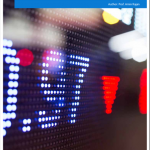
The “Uncertainty Hedge” Gold up 6.6% so far this year. Stock Market Price/ Earnings Alarm sounds…Highest since Tech Stock Bubble. Hussman says stocks are Overvalued, Overbought & Over-Bullish… sees 50% possible drop.
 02/09/2017 - Bill Gross On The Financial Methadone Provided By Central Banks
02/09/2017 - Bill Gross On The Financial Methadone Provided By Central Banks

“What’s wrong with financial methadone? What’s wrong with a continuing program of QEs or even a rejuvenated U.S. QE if needed? Well conceptually at first blush, not much. The interest earned on the $12 trillion is already being flushed from central banks back to government fiscal authorities. One hand is paying the other. But the transfer in essence means that monetary and fiscal policies have joined hands and that the government, not the private sector, is financing its own spending. At an expanding margin, this allows the private sector to finance its own spending and fails to discriminate between risk and reward. $600 billion in the U.S. for instance goes into the repurchase of company stock, whereas before, investment in the real economy might have been a more lucrative choice. In addition, individual savers, pension funds, and insurance companies are now robbed of the ability to earn rates of return necessary to maintain long-term solvency. Financial Armageddon is postponed as consumption is brought forward and savings suppressed and deferred .. While a methadone habit is far better than a heroin fix, it has created and will continue to create an unhealthy capitalistic equilibrium that one day must be reckoned with. Yields will likely gradually rise (watch 2.60% on the 10-year Treasury), yet they will stay artificially low due to the kindness of foreign central bank quantitative easing policies. But that is not a good thing.”
 02/06/2017 - Grant Williams: A Punch To The Face For Central Banks
02/06/2017 - Grant Williams: A Punch To The Face For Central Banks

Peak Prosperity special .. Grant Williams, publisher of the economic blog Things That Make You Go Hmmm and principal of Real Vision TV, returns to the podcast this week to discuss his expectation of a return of volatility to the markets .. Grant warns that over the past seven years, the various financial markets around the globe have melded into a single world market dominated by trading algorithms and the central banks. This new system only knows how to operate effectively in one direction: Up .. Grant is very concerned that a return of volatility will act as a wrench tossed into the gears, quickly throwing the world financial system into panic.
 02/05/2017 - The Roundtable Insight: Dr. Marc Faber Sees Fiscal Stimulus Necessitating Monetary Stimulus To Keep Interest Rates Repressed
02/05/2017 - The Roundtable Insight: Dr. Marc Faber Sees Fiscal Stimulus Necessitating Monetary Stimulus To Keep Interest Rates Repressed

FRA is joined by Dr. Marc Faber to discuss his outlook on 2017, particularly the effects of current events in the US, India, and China.
Dr. Marc Faber was born in Zurich, Switzerland. He went to school in Geneva and Zurich and finished high school with the Matura. He studied Economics at the University of Zurich and, at the age of 24, obtained a PhD in Economics magna cum laude.
Dr. Faber is the editor and publisher of a widely read monthly investment newsletter “The Gloom Boom & Doom Report” report (www.gloomboomdoom.com) which highlights unusual investment opportunities, and is the author of several books including “ TOMORROW’S GOLD – Asia’s Age of Discovery” which was first published in 2002 and highlights future investment opportunities around the world. “ TOMORROW’S GOLD ” was for several weeks on Amazon’s best seller list and is being translated into Japanese, Chinese, Korean, Thai and German. Dr. Faber is also a regular contributor to several leading financial publications around the world.
A regular speaker at various investment seminars, Dr Faber is well known for his “contrarian” investment approach. He is also associated with a variety of funds and is a member of the Board of Directors of numerous companies.
2017 OUTLOOK
We don’t know what will happen. We don’t know much about the past, we don’t even know much about the present, and we know nothing about the future. Markets nowadays are not normal markets; these are markets that are manipulated by central banks who can print an unlimited amount of money. They can buy all the outstanding bonds and equities, and you socialize entire economies if central banks buy all the assets. It is probably dangerous to be 100% in cash because you’ll lose an enormous amount of purchasing power. We didn’t have an enormous amount of consumer inflation, but we had a colossal amount of asset inflation. Central banks will continue to print money but one day things will collapse. If you look at the last few years, not all asset prices have gone up. The next ten years will be a period of asset deflation.
Central banks globally are interested in generating a certain level of CPI in order to ease the burden of government debt over a long period of time. If you have deflation, the burden of an overleveraged system is very high. Who benefits the most from inflation and is hurt the most by deflation? Governments. The US inflation rate isn’t very high, but everyone is having rent increases, food price increases, and insurance increases. Why is consumption relatively weak? Most young people don’t have any money after paying the rent, insurance premiums, and taxes that have gone up.
INCREASE IN INFRASTRUCTURE SPENDING
Fiscal policies that are expansionary will necessitate expansionary monetary policies otherwise interest rates will go up substantially. These fiscal policies are not necessarily favorable. When interest rates tend to go up, the Fed will be very reluctant to increase rates significantly. If the inflation rate moves up, the Fed will increase rates but in real terms rates will stay negative. The cash holder will lose out regardless, in terms of purchasing power.
If you look at the recent literature of the establishment economist, they advocate the abolition of cash because it will “eliminate crime”, which is completely nonsense because the big corruption is in governments and contracts where money moves elsewhere. The other argument is that if the central bank is deflationary, they could push interest rates into negative territory. This is a subtle way to expropriate goods.
This is the mindset you have to be aware of, that central banks are screwing over ordinary people’s savings in order to save the financial market and over-indebted governments that have outgrown their usefulness in terms of economic growth.
INDIA’S CASH BAN
They declared certain bank notes to be invalid. You had to turn them in and there was a minimum limit that would be turned into the new bank notes. The rich and the elite had advance notice to get rid of the cash. The fact that 86% of the money was turned in shows that there was very little illegal money in the system. In India, if there is illegal money, it’s in the hands of big government officials and bankers and rich businessmen, who have ways to evade all the rules.
It’s a complete joke, this Indian “experiment”. The idea was fed to the Indian government by some think tank or economist in the US.
Governments always have a way to maintain and increase their power, and they can tell the public that one of the problems of criminality is cash. There is some level criminality related to cash, but if you ban cash it will continue or even increase; there will be so much cyber-crime you won’t know where to start. It’s just a pretext to give power to central banks. Under Trump maybe some of the power given to central banks will be removed, but that will only last until the next recession. If the stock market declines 20%, we’ll have another QE for sure. Whatever they call it, it’ll be the same: money printing.
TRUMP VS REAGAN
Trump has been frequently compared to Reagan. The difference between Trump and Reagan is that asset prices were very depressed when Reagan became president. It was no higher than it had been in 1964. Trump has huge headwinds. Interest rates won’t go down very much and Trump has an overvalued Dollar.
This high valuation of equities and low bond yields bring about a problem of pension fund liabilities. The pension fund system is basically bankrupt. They have to cut the pensions they give to pensioners or increase the contributions meaningfully, which is like an additional tax. So with low interest rates the Fed has actually created numerous problems. Most people are not wildly bullish, but they think asset prices will go up, along with real estate prices. But actually it’s started to go down in the last six months.
The financial market today, globally, is disproportionately large compared to the real economy. That was very different in 1980.
WHAT’S HAPPENING IN CHINA
The Chinese economy has definitely slowed down, and will continue to slow down in the long run to a growth rate of about 4% per annum. China has a gigantic credit bubble, which will hurt consumption at some point because the consumer invests in a lot of things at overpriced levels, and going to lose money. The best thing for China is to have a serious recession, because that will clean the system. Recessions are useful because they clean the system, the bad debts, and most importantly if you have a capitalist system it wipes out misbehaving entrepreneurs. That eliminates the competition and so the price level stabilizes. But if the government steps in, then the price level is likely to fall. These interventions by central banks with fiscal policies may actually aggravate deflationary pressures instead of removing them.
The economic system leaves us in a free market where old companies that look backward and don’t innovate are wiped out, and that’s why we have progress in the world. If we don’t have that, we’re going back to a socialist system.
There’s no question that a slump in China will have a huge impact in the world. The US is a slightly larger economy than China, but the US is over 70% consumption, and of that consumption it is 70% services. China is still a manufacturing center, and there is huge capital spending in China. If China really has a recession, the demand for raw materials will plunge. This is a different world from the 1950s, when the US was dominant. China is the largest trading partner of 120 countries compared to the US being the largest trading partner of 74 countries.
INVESTMENT PROTECTION
The only protection is to diversify because we don’t know what will happen. An investor should own some real estate, and invest some money in equities. There are always pockets of value somewhere, but what the fund managers will never tell you is that the best performing sector last year was mining stocks, not energy. Big institutions don’t want to tell you that because they hate gold.
Abstract by: Annie Zhou <a2zhou@ryerson.ca>
LINK HERE to download the MP3 Podcast
 02/04/2017 - Carmen Reinhart: Central Banks Tolerate Higher Inflation To Help Erode Massive Debt In Their Economies
02/04/2017 - Carmen Reinhart: Central Banks Tolerate Higher Inflation To Help Erode Massive Debt In Their Economies

“There may be yet another factor motivating major central banks’ tolerance for higher inflation. But their leaders may be unwilling to acknowledge it openly: as I have argued elsewhere, a steady dose of even moderate inflation will help to erode the mountains of public and private debt advanced economies have built up in the past 15 years or so.”
 02/04/2017 - Charles Hugh Smith: Central Banks Have Failed To Generate Economic Growth
02/04/2017 - Charles Hugh Smith: Central Banks Have Failed To Generate Economic Growth
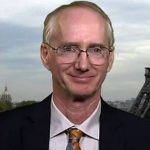
Charles Hugh Smith: “Rather than be seen to be further enriching the rich, I think central banks will start closing the ‘free money for financiers’ spigots .. The Fed’s QE ‘free money for financiers’ never did ‘trickle down’ to the bottom 95%, and the enormous expansion of bank credit is no longer driving corporate profits higher. There are other factors at work, of course; a global slowdown in trade, for example, a rise in energy costs and a stronger US dollar. All of these impact credit, profits and the share of GDP flowing to labor in wages, salaries and benefits. Whatever the causes, the reality is that the positive results of credit expansion have reached the top of the S-curve and are now declining. Expanding credit, via central bank monetary policy or private-sector bank credit, is no longer boosting profits or wages.”
 02/04/2017 - Dr. Marc Faber Likes Agricultural & Precious Metal Commodities
02/04/2017 - Dr. Marc Faber Likes Agricultural & Precious Metal Commodities

Investors may be in for a “year of disappointments” and precious metals may prove to be a useful hedge, this according to famed contrarian investor Dr. Marc Faber. Known as Dr. Doom for his often pessimistic views, Faber shares his 2017 outlook is no different to his previously negative forecasts. “As we come into 2017, investors seem to be extremely optimistic about U.S. equities and about the U.S. dollar .. I think we can have a year of disappointments.” .. Faber says investors should look to have exposure in commodities, especially platinum, which he dubbed his “favorite precious metal for 2017.” “The individual investor will find it difficult to trade commodities where he has to rollover his position every month or every 3 months, which is very costly .. For the normal investor who wants exposure in commodities, the best is to be in precious metals – gold, silver, platinum.” .. like agricultural commodities.
 02/03/2017 - Dr. Albert Friedberg: Central Banks Are Lending Against Poor Collateral At Subsidized Rates
02/03/2017 - Dr. Albert Friedberg: Central Banks Are Lending Against Poor Collateral At Subsidized Rates

Austrian School Economist-based Hedge Fund Manager Dr. Albert Friedberg: “Governments are no longer willing to endure the short-term pain that is necessary to cleanse the economic system of mal-investments and over indebtedness. Lombard Street’s old adage (late 19th century) that central banks should lend freely against good collateral and at prohibitive rates in a financial crisis is no longer the reigning principle. Today, the opposite is true: central banks lend freely against poor collateral at subsidized rates. Andrew Mellon’s austere advice to President Hoover at the onset of the Great Depression to “liquidate labor, liquidate stocks, liquidate farmers, liquidate real estate… it will purge the rottenness out of the system…” — the kind of advice that helped the US recover from the post-WWI depression in record time — was not heeded, and the depression of the ’30s dragged on until the onset of World War II. Today, of course, Mellon’s advice is heresy of the highest order. Increasingly, governments move to abort naturally occurring corrective trends with the result that necessary economic adjustments never occur. The price will one day be paid, but the bearish bet will have expired by then. The practical consequences of this soul-searching examination is to put an important restraint on catastrophic bets, defined as 50% or greater declines in major indices or in systemically important industry sectors like banking that lead to a generalized financial crisis. In short, we will need to exercise extraordinary circumspection before we make bearish bets that hinge on economic and financial upheavals of historic magnitude. These sorts of bets should be considered only when the burden of proof is overwhelming and only if and when limited risk options these conditions not be obtained, a defensive posture, by way of a buildup of cash and near cash instruments, will be adopted.”
LINK HERE to the Quarterly Report
 02/01/2017 - Should Cash Be Abolished?
02/01/2017 - Should Cash Be Abolished?
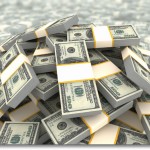
Frank Shostak:
“First, there is the problem that the mandatory switch from physical money to money held as deposits within banks will deprive people of the privacy they may wish in the allocation of their financial resources.
Second, once all cash is transferred to the banking system, there is the real risk that control over that money is progressively ceded to that system and to the governments which thrive upon it. Political or consumption activities that are unpopular with government and/or commercial interests — especially in an environment of growing powers of the ‘security state’ — could result in retributive action via restrictions on access to those monetary balances.
Third, in a purely digital world it would be impossible to withdraw physical money should people believe that their bank (or the banking system as a whole) was at risk of collapse. This could potentially lock people on board a sinking ship, or at least remove the ability of people to make their own judgments and vote with their monetary feet.
The compulsory switch to purely digital cash could well become yet another facet of the growing tendency toward the further centralization of state power and the decline in individual liberty.”
 01/28/2017 - Europe Proposes “Restrictions On Payments In Cash”
01/28/2017 - Europe Proposes “Restrictions On Payments In Cash”

Plan 2016 028 Cash Restrictions En by zerohedge on Scribd
 01/28/2017 - James Grant: It’s A Different Investment World Now
01/28/2017 - James Grant: It’s A Different Investment World Now

A different investment world. Financial Thought Leader, James Grant, Editor of Grant’s Interest Rate Observer declares the 35 year bull market over and sees few opportunities to replace it. WEALTHTRACK broadcast on January 27, 2017.
 01/28/2017 - The Roundtable Insight – Yra Harris Emphasizes Keeping An Eye On Europe
01/28/2017 - The Roundtable Insight – Yra Harris Emphasizes Keeping An Eye On Europe

FRA is joined by Yra Harris to discuss Trump’s effect on the global market, along with Draghi’s influence coming from Europe.
Yra Harris is a recognized Trader with over 32 years of experience in all areas of commodity trading, with broad expertise in cash currency markets. He has a proven track record of successful trading through combination of technical work and fundamental analysis of global trends; historically based analysis on global hot money flows. He is recognized by peers as an authority on foreign currency. In addition to this he has Specific measurable achievements as a member of the Board of the Chicago Mercantile Exchange (CME). Yra Harris is a Registered Commodity Trading Advisor, Registered Floor Broker and a Registered Pool Operator. He is a regular guest analysis on Currency & Global Interest Markets on Bloomberg and CNBC. He has been interviewed for various articles in Der Spiegel, Japanese television and print media, and is a frequent commentator on Canadian Financial Network, ROB TV.
TRUMP’S EFFECT ON THE MARKETS
This is going to be a slow, grinding process. There’s a lot of things to dislike about Trump, but he’s showing some real leadership in that he’s willing to go out of a lot of boxes. He wants to renegotiate NAFTA so relations with Mexico and Canada would be stronger after it takes place. The Mexican Peso, by all fundamentals, is one of the most undervalued assets in the world. The currency has depreciated 700% since the beginning of NAFTA.
When you look at the value of the Peso, outside of an absolutely closing of the border, you’ll shut down America. The same goes for Canada. The Mexicans have tried to hold their currency, they don’t like the weakness of their currency, but the world has done it. Anyone who has emerging market exposure goes to sell the Peso because it’s the most liquid, but that’s driven it down to 21.28 Pesos to the Dollar. For a currency to devalue that much, it has to be choking on debt or going through phenomenal inflation.
With Canada being a member of NAFTA as well, there’s a strong dependence of Canada on the US economy. The Canadian dollar, weak as it is compared to eight years ago, is still medium.
Trump’s a negotiator, so if went in and spoke to the automobile manufacturers and said “This is what I want from you, what do you want from me?”, they must’ve replied by saying that the Japanese Yen is incredibly weak. It was a cry saying they want relief from this. There’s a lot of short position on the Japanese Yen out there. To couple with that, the Australians approached the Japanese saying they should carry on with PPP regardless, and the Japanese disagreed.
There can’t be a positive course because the world is at odds. United States will move unilaterally to depreciate the Dollar. Trump operates on a give-get basis, and doesn’t hold to international deals like avoiding currency intervention. A lot of Japan’s monetary policy that resulted in financial repression was done to drive currency values lower.
TRADE ARRANGEMENTS
Mexico has a debt on imports, which is basically a surcharge. The US is the opposite because we tax exports for revenue and allow imports. Global supply chains are so deep now. A lot of fields are changing. Trump does want to do a reset on the global order. The entire global order has been a burden on the American middle class especially. It was good for them in the 50s and 60s when the US dominated the world stage, but that was when the US had no competition. It’s harder now because there’s more global competition, but the US is still funding that. And that’s what Trump is saying.
Draghi told the German people that they’ve gotten a lot of benefits from being in the EU, and that may be true but they’re running into the same problem that Clinton and the Democrats had: Trump raised the question of “who’s benefited?” The average German citizen has been repressed to pay for this. They’ve borne the burden. They walked into this; German people do not live on debt, with the lowest home ownership of any developed market because people don’t borrow money to buy things. They’re savers, and whole basis of Financial Repression Authority is talking about people who are financially repressed and the central banks decide to bail out. There’s a momentum to this; this is about what’s going on, and the Germans can’t do anything because they don’t control their currency and they don’t control the bank.
CENTRAL BANK ACTIVITIES AND COORDINATION
Coordination will break down because they’re all in different places. Kuroda’s put the Japanese in a bad spot. What do they do now? The curve has now started to steepen in Japan so they’re on this mission where they’re moving on with QE which weakens the currency. They’re going to have a problem. With the ECB, if Draghi were to pull back the QE, rates would rise dramatically in Italy, Spain, and Portugal. There are some serious issues with this and you can see the Fed going their own way now because they’re looking to fight a battle about exorbitant fiscal stimulus and suddenly they go hawkish. If the Fed were to move aggressively, Trump will respond by intervening on the Dollar.
The effect on the 10 year bond is unknown. If the Dollar rallies, everyone loves America again. If the US intervenes, the 10 year yield will go higher because people will start selling Dollar assets. It’s a very tough question and we’ll have to watch the Fed closely and economic fundamentals, but the curves are steepening all over the world. People are selling in the long run in anticipation of improved global growth.
Gold is good because the central banks have been married to this zero to negative interest rate, and they don’t know what to do. If they’re seeing the panic in any way, that’s what gold is good for. It’s amazing that gold is still up there when equity markets are rallying.
Abstract by: Annie Zhou <a2zhou@ryerson.ca>
LINK HERE to download the MP3 PODCAST





